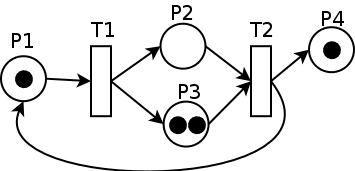Bpost - BISJanuari 2007 - Januari 2009Content: |
 |
Management Summary
The project is a management application for handling the business logic of Belgian Post International, a daughter company of the Belgian Post. The application will handle the operational follow-up, as well as financial handling and reporting needs. Additionally, a new business approach for compliancy with international rules (International Post Corporation) was to be analysed and implemented. This included not only a applicative solution, but also a redesign of the processes involving the sampling incoming and outgoing parcels.
Novelty Items
During this project, several Proof of Concepts (POC) were launched which didn’t make the final cut in the deployment. This was not due to the unsuccessful nature of the POC, but rather due to budgetary constraints. One of these POCs was the study for the introduction of business process management. It is worth mentioning that at this point in time the maturity of BPMN was far from great. BPMN 1.0 has just been introduced a little more than a year in the past, and its options were not yet up to the standards of execution it has today. The evolution of BPMN is shown in the illustration below, taken from the blog of Bruce Silver.

In order to get around this lack of maturity, I took it upon myself to create a framework for business process automation based on the work of Professor Wil Van Der Aalst of the University of Eindhoven, who had made a lot of headway in the field of workflow automation using mathematical petri nets. As a quick mathematical reminder of what petri nets are, here’s a summary: Petri nets are a graphical tool for the description and analysis of concurrent processes which arise in systems with many components (distributed systems). Petri nets consist of places (indicating a state) and transitions, as shown in the example below.

The concepts of this framework as well as a preliminary implementation of the most common workflow patterns defined by Professor Van Der Aalst were produced. The approach was taken that places would be data objects, and transitions would be pieces of code transforming the input data objects into new states of such objects or entirely new objects. Validation algorithms were also included to verify the integrity and "executability" of the petri net designed. As stipulated, the main reason this POC was not included in the deployment of BIS was the cost associated with the training of the business people and analysts in the workflow patterns of the petri net approach. This POC did introduce me however to the world of Business Process Management, and started of my journey into its wonders.
Lessons Learned
The trigger for the complete redesign of the operational approach to sampling of incoming and outgoing parcels had two parts: one was the introduction of new sampling guidelines through the 2008 version of the REIMS operational guide and the construction of a new sorting center. The new ENO1 principles laid out by the IPC needed to safeguard the proper application of sampling used to determine terminal dues between the countries that made up the REIMS postal agreements (22 countries in total).
The Latin Square sampling that across all weeks in the months each day of the week was representatively chosen as a sample point. As sampling should happen at least 8 times a month (translating to 2 times a week), and Sunday was not used for sampling, the remaining six days could only be chosen twice, and at least once. The reactionary part of the algorithms had to indicate the need for additional sampling if extremes within the data entries were detected. The proactive part had to determine and indicate to the samplers which shipments to sample.
| Project | Silo Architecture | BPM | Public Sector |



